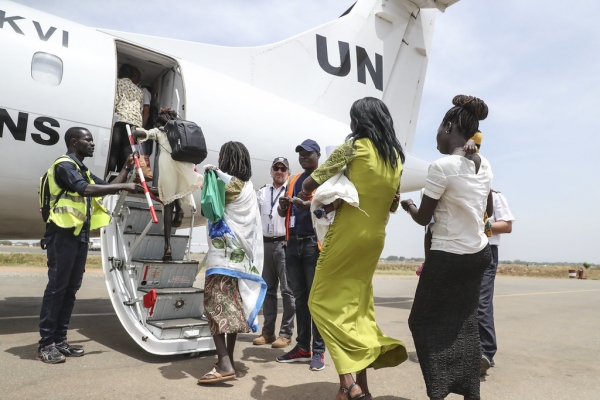While the previous episodes of the “IDPs and Conflict” series have outlined the challenges that people living in internal displacement as a result of conflict and violence encounter, this report will present the main solutions and instruments that have been developed to end internal displacement.
In particular, the end of displacement is achieved when the persons displaced no longer have specific protection and assistance needs connected to their internal displacement and, therefore, enjoy their human rights without discrimination. This objective is particularly enshrined in the “Guiding Principles on Internal Displacement” which stipulate in Principle 6 that “displacement shall last no longer than required by the circumstances” and outline in Principles 28-30 the right of internally displaced persons to a durable solution.
The main instrumented developed to achieve this objective is the so called “IASC Framework for Durable Solutions for Internally Displaced Persons”. According to this framework, a durable solution for displacement may be achieved through three means: the sustainable reintegration at the place of origin (referred also as “return” solution); the sustainable local integration in areas where internally displaced persons take refuge (or “local integration”); the sustainable integration in another part of the country (or “settlement elsewhere in the country”). In general, displacement ends when one of these solutions has been found, and IDPs no longer have protection needs or vulnerabilities that are specifically related to their displacement. In line with the Guiding Principles, the responsibility to supply for these solutions rests primarily with national authorities. Nonetheless, humanitarian and international actors should still play a complementary role in the search for durable solutions.
Alongside this framework, a new approach to protracted internal displacement has been devised and encompasses for main instruments: the UN Secretary-General's Agenda for Humanity, 2030 Agenda for Sustainable Development and the OCHA’s studies “Breaking the Impasse: Reducing Protracted Internal Displacement as a Collective Outcome” and “Reducing Protracted Internal Displacement: A Snapshot of Successful Humanitarian-Development Initiatives”.
The UN Secretary-General's Agenda for Humanity, introduced in 2016 at the World Humanitarian Summit, is a five-point plan that set outs the changes required to alleviate suffering, reduce risks and lessen vulnerability on a global scale. Within this Agenda, forced displacement is framed as a development issue and addressing of internal displacement is presented as a long-term commitment.
The 2030 Agenda for Sustainable Development was instead formulated to eradicate poverty and achieve sustainable development by 2030 world-wide, while ensuring to “leave no one behind”. Under this commitment, the 2030 Agenda incorporates internal displacement issues into its 17 Sustainable Development Goals (SDGs) and specifically includes IDPs as a vulnerable group that must not be left behind.
In 2017, OCHA presented a study addressing the issue of protracted internal displacement. This study, ‘Breaking the Impasse: Reducing Protracted Internal Displacement as a Collective Outcome’, provides some recommendations to end this phenomenon, including early development of self-sufficiency in protracted situations and strengthening of cooperation across the humanitarian, development and political divides. Moreover, this study formulated a methodology to reach collective results that address protracted internal displacement and prevent new displacement situations from transforming into long-term crises. Similarly, OCHA’s study 'Reducing Protracted Internal Displacement: A Snapshot of Successful Humanitarian-Development Initiatives' published in 2019 builds on the previous document and outlines a series of successful humanitarian-development projects which ameliorated the living conditions of IDPs.




